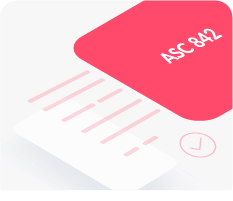
Why you should implement a lease accounting solution now
By
EZLease team
How often have you said, “I’ll get to that later” for something you’re not that excited about or you’re not sure how to start? Lease accounting is like that for a lot of people, but hear us out. Those who have already been through the process to get compliant say that getting started early can really pay off. That way you’re not scrambling at fiscal year-end — or worse, struggling to catch up when your auditors come knocking.
As you start planning, one of your initial thoughts may be: Do I really need a lease accounting software solution to get compliant? I don’t have that many leases. My trusty spreadsheets work just fine. My [insert department, whether that’s finance, accounting, procurement] team has a good handle on all our leases and are good at keeping track of everything. I have total confidence in my financial statements and we would pass an audit with flying colors!”
Look, we’ve heard it all. And we get it – implementing a new solution to comply with new standards can be a bit overwhelming. But take it from your public company counterparts – they are still having audit issues, and they’ve been doing this lease accounting thing for a few years now! Can you really afford NOT to implement a solution?
To help put things in perspective, we thought we’d break down the positives of implementing a solution and the negatives of waiting, and let you be the judge.
Positives of implementing sooner
- You may identify leases you can return or that have gone way beyond their approved end-of-term period, which would help to free up some cash.
- Analyzing your lease data could provide some valuable insight that can help improve lease negotiations and outcomes in the future.
- You could gain deeper insight into leasing costs, which can help you make better decisions.
- You may experience increased credibility and reliability of your financial reporting and statements (yes, better than your trusty spreadsheet!).
- Your investors will have a clearer picture of your liabilities.
- You will make audits easier for your team by automating reports and being able to justify the completeness and accuracy of your lease accounting data.
Now, let’s talk about what can happen if you decide to wait on implementing a solution.
Negatives of waiting to implement
- Your financial statements won’t be audit ready.
- You could run into trouble with your lenders and creditors.
- You could face other financial repercussions for not complying on time.
- Your lease accounting will be out of date. For example:
- Leases with non-level payments may not be properly recognized using a straight-line lease expense. Now, this isn’t a new concept compared to the prior guidance under ASC 840; however, there is an increased risk that this will go undetected for embedded leases until they are later identified.
- Related party leases may not be appropriately analyzed until year-end, leaving you surprised when leases are required to be recognized on the balance sheet.
- After preparing lenders and other users for the impacts of the new standard and possibly renegotiating terms, you may see unexpected impacts on debt covenants due to recognizing liabilities for embedded and related party leases. Financial statement users, especially lenders, don’t like surprises!
- You find out that it takes more time and effort than anticipated, causing you to miss the deadline and risking a covenant violation for failing to provide timely audited financial statements.
Now, even after all that, you still may be saying to yourself, “I see where you’re coming from, but I really think we have a good system in place with our spreadsheets. We have plenty of staff who know the ins and outs of spreadsheets and we’re confident that our data is accurate.” If that’s the case (and we get it, a lot of companies think the same way!), let me give you a few more things to think about:
- Spreadsheets aren’t smart – YOU must provide (and maintain) the data that goes in a spreadsheet. It can’t do any of the work for you.
- Spreadsheets are a productivity tool – not a collaboration tool. Your coding and logic may not make sense to others, and you can’t track changes that you or other people might make.
- Spreadsheets don’t have controls or integrity — data integrity that is. Any data can be added to a spreadsheet, whether it’s correct or not.
- Spreadsheets have no built-in reporting which means you’re the one who must manually build the disclosure reports and journal entries.
- Spreadsheets don’t have an audit trail – this is an important one when it comes to achieving compliance.
We could go on, but hopefully you get the picture. While your spreadsheets may have worked fine for you in the past, they just won’t cut it anymore with ASC 842, GASB 87 or GASB 96. In fact, you should check out these myths and risks of using spreadsheets for your lease accounting.
So, why not make your life (and your audit) easier with a solution that can help turn those negatives into positives and free you from your spreadsheets! Your future self (and your auditors) will be grateful.
In a nutshell, put aside the denial because you can’t ignore the deadlines anymore. It’s here to stay. Now is the time to take control of your compliance journey and start moving towards implementation. You’ll be glad you did.
Need a little help getting started? Check out this guide or reach out to our team. We’re here to help.



